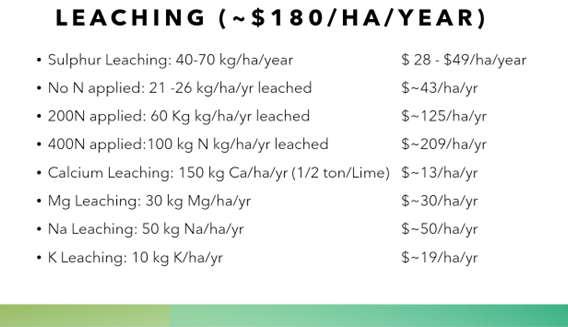Waikato-based Soil Scientist Dr Gordon Rajendram on The Cost of Nutrient Leaching
Tuesday 9 April 2024, 10:24AM
By Media PA
228 views

Nutrient leaching from soil is a significant concern for farmers and environmentalists alike, as it represents both a loss of valuable fertilisers and a potential source of environmental pollution. Dr Gordon Rajendram has provided critical insights into this issue, demonstrating that the amount of nutrients lost via subsurface flow is closely related to the amount of rainfall and drainage.
In areas where rainfall and drainage range from 500 to 7000 mm per year, particularly from April to October, nutrients can be washed beyond the root zone, where plants are unable to utilise them. This process is especially problematic for anions like nitrates (NO3-) which are highly mobile and tend to leach easily. Anions also carry cations with them, such as calcium (Ca2+), exacerbating the loss of nutrients.
For instance, Dr Rajendram's research indicates that sulphur leaching can be between 40 to 70 kg/ha/year, costing approximately $28 to $49 per hectare annually. When it comes to nitrogen (N), a critical element for plant growth, the figures are even more striking. Without any nitrogen applied, between 21 to 26 kg/ha/year can leach, amounting to around $43 per hectare each year. However, when 200 kg of nitrogen per hectare is applied, the leached amount can increase to about 60 kg/ha/year, with the cost rising to around $125 per hectare annually. And with a higher application rate of 400N, up to 100 kg N/ha/year may leach, costing approximately $209 per hectare each year.
Calcium leaching, which equates to the loss of half a ton of lime, is around 150 kg Ca/ha/year, resulting in a cost of about $13 per hectare per year. Other nutrients like magnesium (Mg), sodium (Na), and potassium (K) also experience significant leaching, with costs of $30, $50, and $19 per hectare per year, respectively, for losses of 30 kg Mg, 50 kg Na, and 10 kg K.
Dr Rajendram asserts that to mitigate nutrient leaching, farmers need to employ strategic fertiliser management. This includes soil testing to determine the existing nutrient levels, timing fertiliser applications to match plant needs, and using technologies such as controlled-release fertilisers, nitrification inhibitors and management practices such as using standoff pads/herd homes
"Effective nutrient management is key to both economic efficiency and environmental stewardship," Dr Rajendram advises. "By optimising fertiliser use, we can reduce leaching losses, saving both our resources and our rivers." This holistic approach to agriculture is essential for sustainable farming practices that protect both the productivity of the land and the health of the environment.
Contact Dr Gordon Rajendram
021 466077
rajendram@xtra.co.nz
www.gordonrajendramsoilscientist.co.nz
Contact Phillip Quay
phillip@mediapa.co.nz
027 458 7724